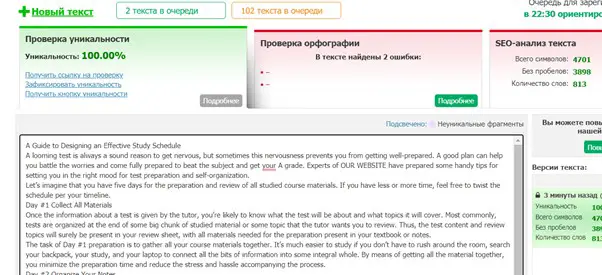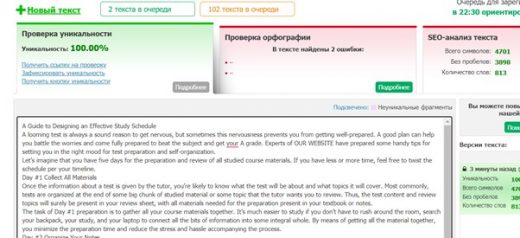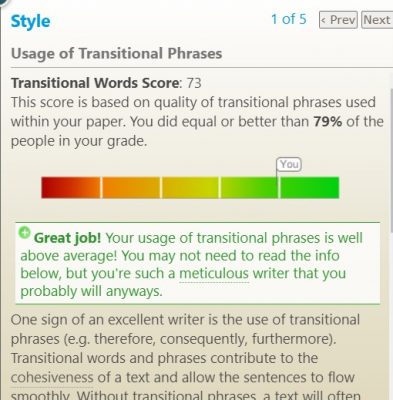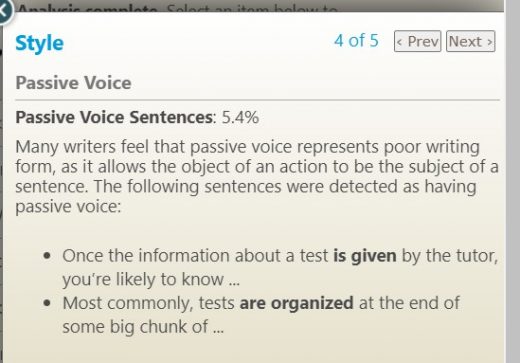Guide to designing an effective study schedule, Building Design Profession Tips, Online Advice
A Guide to Designing an Effective Study Schedule
10 Mar 2021
A looming test is always a sound reason to get nervous, but sometimes this nervousness prevents you from getting well-prepared. A good plan can help you battle the worries and come fully prepared to beat the subject and get your A grade. Experts at Takemyexamonline have prepared some handy tips for setting you in the right mood for test preparation and self-organization.
Let’s imagine that you have five days for the preparation and review of all studied course materials. If you have less or more time, feel free to twist the schedule per your timeline. Recommendations for each day are provisional, so you can combine two days into one if you lack time badly.
Day #1 Collect All Materials
Once the tutor gives the information about a test, you’re likely to know what the test will be about and what topics it will cover. Most commonly, tests are organized at the end of some big chunk of studied material or some topic that the tutor wants you to review. Thus, the test content and review topics will surely be present in your review sheet, with all materials needed for the preparation present in your textbook or notes.
The task of Day #1 preparation is to gather all your course materials together. It’s much easier to study if you don’t have to rush around the room, search your backpack, your study, and your laptop to connect all the bits of information into some integral whole. By getting all the material together, you minimize the preparation time and reduce the stress and hassle accompanying the process.
Day #2 Organize Your Notes
Once you have all the necessary materials at hand, it’s high time to organize the study materials properly. These may be some notes or quiz tools, flashcards, or fragments of materials typed on separate sheets of paper – whatever variant suits your learning style the best. Preparation of such materials and their ordering takes time, so it’s better to reserve a day for this procedure. In this way, you will avoid the hassle and derive some learning experiences from the preparation process.
Day #3 Study
So, now all your flashcards and notes are ready, and the active memorization process begins. The flashcard technique is beneficial because it helps you weed out the material you know well, minimizing the volume of content to study at each successive session of learning.
Let’s see how it works (scientists also call this method spaced learning). Suppose you have 50 flashcards with some Psychology materials. During the first round of review and memorization, you study all 50 flashcards and give correct answers to only 10 of them. You move the ten flashcards you memorized successfully into a separate row, focusing only on the material you couldn’t memorize. In the next round, you study only 40 flashcards and answer 15 other questions correctly. Thus, you move these 15 flashcards into the “success” row, including only the remaining 25 flashcards into the next round of review. Engineering assignment writing experts recommend using this technique to focus only on the materials you have not memorized well yet, saving your study time and allowing you to concentrate.
Day #4 Study a Bit More
On the second study day (Day #4), you can repeat the whole learning cycle once again. Use all your 50 flashcards and remove the ones you know well after the first round. Then go through the second review round and remove the flashcards you could memorize successfully, and so on. Take every spare minute to study and look through your flashcards repeatedly; such occasional learning will guarantee long-term material retention and good comprehension of the course content.
Day #5 Make a Test Rehearsal and Correct Mistakes
On the last day before the test, you can run a preparatory test similar to the one that your tutor will grade. Try to arrange all conditions similar to the test ones, knowing your tutor’s procedure and preferences. Give yourself precisely the time you will have at the test – set a timer not to indulge yourself and not to relax, knowing that it’s only a test rehearsal.
Once you complete the test, check it to see how many wrong answers you have given. Make sure to review these flashcards once more before the test to memorize the material better and avoid the risk of making similar errors at the real test.
Here you go with the workable tips for scheduling your test preparation. Write an essay for me staff always recommend setting some spare time before the test and not studying all material one night before the exam to comprehend and retain the learned material better. Follow these tips, and you’re sure to get A’s consistently. With rigorous, well-planned preparation and no fuss around the upcoming test, getting a top grade becomes much more realistic.
How to properly describe architect facts in an essay
Comments on this Guide to Designing an Effective Study Schedule article are welcome.
Home Articles
Residential Architecture
Comments / photos for the A Guide to Designing an Effective Study Schedule page welcome








